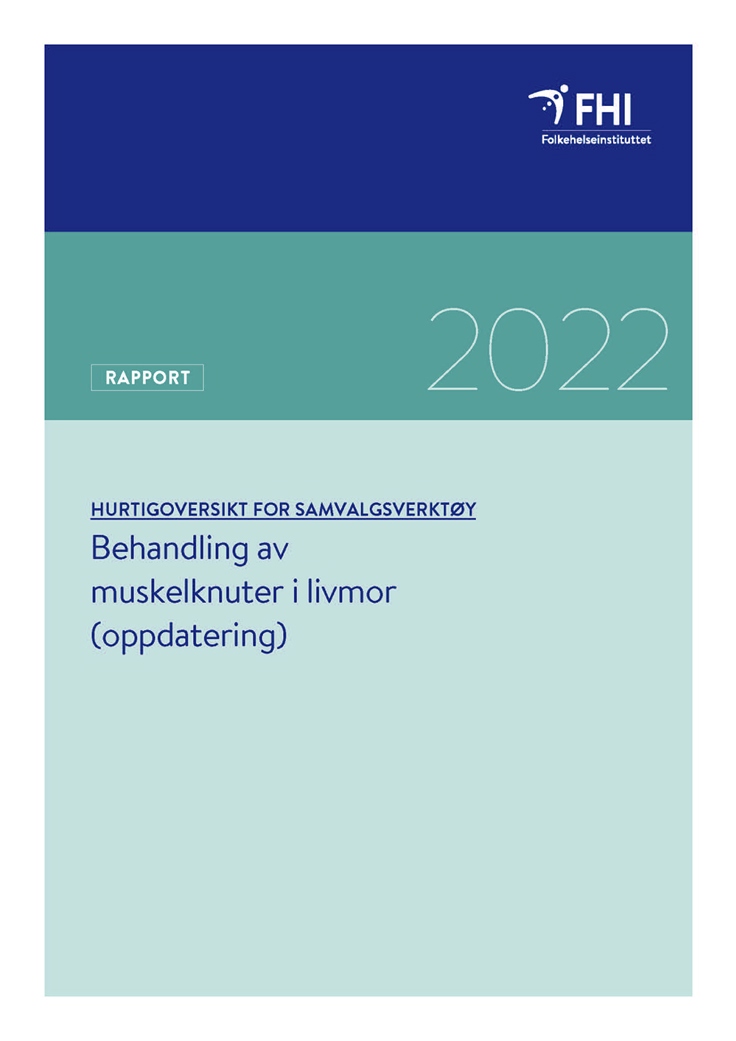Treatment for uterine fibroids: a rapid review for patient decision aid (update)
Systematic review
|Published
In this rapid review, the intention was to update the knowledge base for the patient decision aid for the treatment for uterine fibroids.
Download
Key message
Uterine fibroids are made of a type of muscle cells and connective tissue that grow on the wall of the uterus. About eight out of ten women have uterine fibroids, and about a third of these get troublesome symptoms.
We found one randomized study and a health technology assessment on the effect of combination therapy with gonadotrophin-releasing hormone receptor antagonist and two Cochrane reviews on non-steroidal anti-inflammatory drugs and progestogen, respectively.
We found that:
- Combination therapy with gonadotropin-releasing hormone receptor antagonist may lead to less menstrual bleeding and pain in more women than placebo
- Non-steroidal anti-inflammatory drugs (NSAIDs) may reduce menstrual bleeding compared to placebo
- We are uncertain or did not find research on the effect of gonadotropin-releasing hormone receptor antagonist and non-steroidal anti-inflammatory drugs (NSAIDs) on adverse events, need for further treatment, sexual function, pregnancy, childbirth, onset of menopause and malignany
- We do not know the effect of gonadotropin-releasing hormone-receptor antagonist and non-steroidal anti-inflammatory drugs (NSAIDs) compared with breakdown of fibroids, myomectomy and hysterectomy
- We do not know the effect of progestagen compared to placebo or other measures


